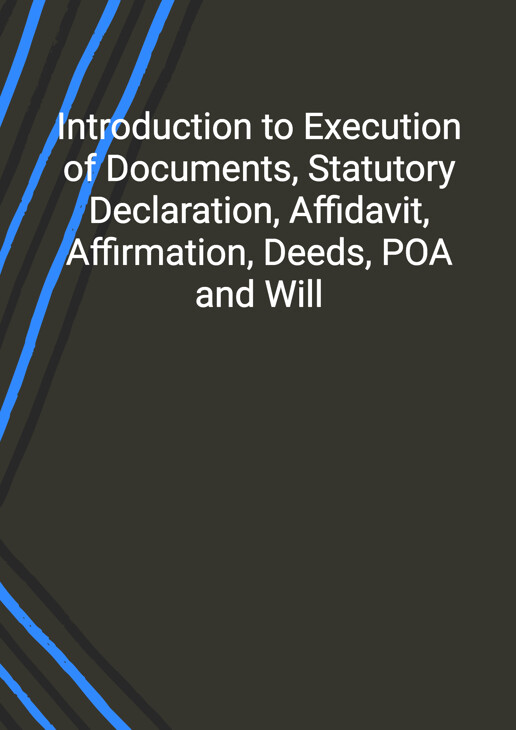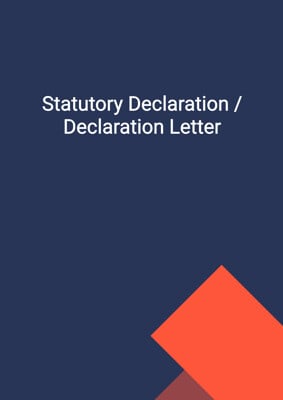How to Tailor the Document for Your Need?
01
Create Document
Click "Create Document" button and the document will be prepared with your account details automatically filled in.
02
Fill Information
Please fill in any additional information by following the step-by-step guide on the left hand side of the preview document and click the "Next" button.
03
Get Document
When you are done, click the "Get Document" button and you can download the document in Word or PDF format.
04
Review Document
Please review the document carefully and make any final modifications to ensure that the details are correct before publication / distribution.
Document Preview
Document Description
The document titled 'Introduction to Execution of Documents, Statutory Declaration, Affidavit, Affirmation, Deeds, POA and Will' is a comprehensive guide that provides information on the execution of various legal documents. It emphasizes the importance of proper execution and delivery of documents to ensure their validity and enforceability. The guide covers the execution requirements for both individuals and companies, highlighting the differences and complexities involved. It also explains the concept of deeds and their significance in creating or confirming rights, interests, or obligations. The guide further delves into the execution of specific documents such as statutory declarations, affidavits, affirmations, and witness statements, providing detailed explanations of their purpose and the formalities involved. It also discusses the execution of documents under seal, including the requirements for sealing and delivery. The guide provides guidance on the execution of documents by individuals, including the execution of powers of attorney and wills. It also addresses the execution of documents by companies, emphasizing the use of the common seal and the role of directors and company secretaries in the execution process. The guide highlights the importance of complying with internal management requirements and the concept of apparent authority. It also explains the consequences of non-compliance with execution requirements and the effect of invalid execution on the enforceability of the document. The guide concludes with information on the execution of documents by foreign corporations, including the use of powers of attorney and the notarization of documents executed abroad. It provides specimen wordings for different types of documents and execution methods, ensuring clarity and accuracy in the execution process.
How to use this document?
1. Understand the importance of proper execution and delivery of legal documents to ensure their validity and enforceability.
2. Differentiate between the execution requirements for individuals and companies, considering the complexities involved.
3. Familiarize yourself with the concept of deeds and their significance in creating or confirming rights, interests, or obligations.
4. Learn about the execution requirements for specific documents such as statutory declarations, affidavits, affirmations, and witness statements.
5. Understand the formalities involved in the execution of documents under seal, including sealing and delivery.
6. Follow the guidelines for the execution of documents by individuals, including powers of attorney and wills.
7. Comply with the execution requirements for companies, including the use of the common seal and the involvement of directors and company secretaries.
8. Ensure compliance with internal management requirements and understand the concept of apparent authority.
9. Be aware of the consequences of non-compliance with execution requirements and the effect of invalid execution on the enforceability of the document.
10. Familiarize yourself with the execution process for foreign corporations, including the use of powers of attorney and the notarization of documents executed abroad.
11. Refer to the provided specimen wordings for different types of documents and execution methods to ensure accuracy and clarity in the execution process.
Not the right document?
Don’t worry, we have thousands of documents for you to choose from:








